Droneports: Unlocking the Economic Potential for Your Community
Droneports: Unlocking the Economic Potential for Your Community
Co-located event at Virtual XPONENTIAL, All Things Unmanned, October 5-8, 2020
Monday, October 5 | 10:00 AM - 3:00 PM EDT
Discover how Droneports are becoming an epicenter for regional UAS activities. Learn from industry leaders and visionary communities about how Droneports are serving as nodes for testing, training and commercial drone operations by obtaining permissions for flight, and providing facilities for housing, maintenance, fueling, piloting of fleets and more.
Emcee
Sallie Traxler
Director, DronePort Network
For over 20 years, Sallie has been a strategic mind behind organizations identifying and achieving their goals through thought partnership, innovation and change management. Committed to creating the space for organizations to move from vision to implementation, she has led initiatives aimed at how organizations meet the needs of their customers and stakeholders. She is known for her ability to forge deep partnerships with businesses, nonprofits, and local, state and federal agencies. She has led and consulted with national and international professional and trade associations to drive strategic growth by aligning industry, network and organizational resources to meet emerging needs.
10:00 AM -11:00 AM EDT
An Integration Justification – How States are Throwing Out the Welcome Mat for the Emerging UAS Sector
It wasn’t too long ago when biotechnology and semiconductors were all the rage and officials were chomping at the bit to lure companies to their respective states. Now, it is the drone industry that has grabbed the attention of states all across the U.S. as they compete with their counterparts to attract this hot, emerging industry and the scores of jobs that can potentially come with it. In this session, you will hear what innovative strategies various states have undertaken to expand this nascent technology within their own borders, ensuring its continued growth for many years to come.
Speakers:
- Sen. Micheal Bergstrom, Oklahoma State Senate, District 1 (Moderator)
- Nick Flom, Executive Director, North Dakota Department of Commerce, Northern Plains UAS Test Site Authority
- Fred Judson, Director, Ohio Dept of Transportation
- Mark Reynolds, Vice President, Strategic Business, New York Empire State Development
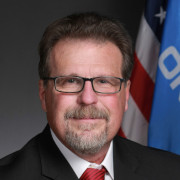
Micheal Bergstrom
Oklahoma State Senate, District 1
Micheal Bergstrom was elected in 2016 as the state senator from District 1, which encompasses the northeast corner of the state. The district includes Craig County, Delaware County, Mayes County and Ottawa County.
After earning his bachelor of arts degree in English from the University of South Florida, Bergstrom conducted his graduate studies at Northeastern State University.
Prior to being elected, Bergstrom spent 10 years in journalism as a reporter, editor, and freelance writer. He then became a full-time educator and had nearly 20 years of experience in public education, the last 18 with Bluejacket Public Schools. Bergstrom, whose teaching certifications include world and American history, U.S. government and economics, taught high school English and yearbook in Bluejacket.
Bergstrom and his wife Robin reside in Adair. They have four children and 14 grandchildren. Their children and grandchildren reside in northeast Oklahoma. Outside of his work in the Senate, Micheal attends Bethlehem Lutheran Church in Adair where he has served as an elder and chairman of the Church Council.
He has been a recipient of awards every year from the Oklahoma Second Amendment Association, including Freshman of the Year and the Minuteman Award. He was given the Oklahoma Legislative Award by the Oklahoma Sheriff's Association in 2018 and 2019 and has received the Oklahoma Farm Bureau 100% award and the Oklahoma Cattleman's Association top award.
Nick Flom
Executive Director, North Dakota Department of Commerce, Northern Plains UAS Test Site Authority
Nicholas Flom started his career in aviation when he graduated from the University of North Dakota. Mr. Flom spent the early part of his aviation career flight instructing, flight management, and obtaining a Part 135 Air Carrier Certificate for a start-up company to provide on-demand air taxi operations. During this time Mr. Flom acquired over 4,000 flight hours and earned his Airline Transport Pilot certificate.
In 2016, Mr. Flom became the Executive Director of the Northern Plains UAS Test Site. Under Mr. Flom’s leadership, North Dakota was selected as one of 10 participants of the UAS Integration Pilot Program, selected to participate in the FAA’s UTM Pilot Program and has supported multiple Federal agencies like CBP, NASA and DHS. Mr. Flom has also been instrumental in the advancement of beyond visual line of sight (BVLOS) operations for multiple users and use cases.
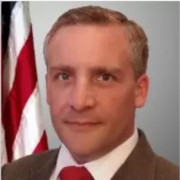
Fred Judson
Director, Ohio Dept of Transportation
Fred Judson is the Ohio Department of Transportation’s/DriveOhio Director of the Ohio Unmanned Aircraft Systems (UAS) Center. He has more than 26 years’ experience at the Ohio DOT specializing in UAS and geospatial technologies. He has spent the last 6 years in the research and implementation of Advanced Air Mobility (AAM) technologies for the State of Ohio. During this time Fred has led several efforts pushing technological advances in UAS/AAM including Ohio’s FlyOhio initiative. Through his leadership, Fred has coordinated several activates with local, state and federal resources with supporting advanced aviation activities.
Fred is a standing member in several committees including Access Ohio 2045, Ohio DOT Statewide Planning and Research Review Committee, Ohio Federal Research Network’s Technical Advisory Committee and the Government Advocacy Subcommittee for the Ohio Aerospace and Aviation Technology Committee (OAATC), Standing Committee on Emerging Technology Law - AJL40, Standing Committee on New Users of Shared Airspace AV095 and continues to participate in governmental and industry standards committees for AAM technologies.
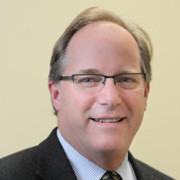
Mark Reynolds
Vice President, Strategic Business, New York Empire State Development
As a key member of New York’s Strategic Business Division of Empire State Development, Mark is responsible for industry attraction and assistance for the semiconductor, nanotechnology, electronics and aerospace business sectors. He works with existing New York state employers to solve critical issues for their growth in the state, and attracting new business to New York, such as BWR Robotics, Cree, Applied Materials, Danfoss Silicon Power and NexGen Power.
Prior to joining ESDC, Mark was Sr. Vice President of Mohawk Valley EDGE, a two-county economic development corporation in upstate NY. In this capacity Mark led EDGE’s worldwide attraction efforts and made deals with companies like BAE, Exelis, Tektronix, UTC, IAI and amsAG, among others.
Before that Mark lead the business development efforts for Stetson-Harza, a multi-disciplinary A/E services firm with offices in Utica and Albany, NY and Chicago, IL. In this capacity Mark worked across the US and in Europe.
Mark holds a Masters of Landscape Architecture degree from SUNY CESF at Syracuse, and a Bachelors of Environmental Sciences degree from SUNY Plattsburgh, NY.
11:15 AM – 12:00 PM EDT
Manning Up Is the Best Approach for Operating Airfields That Involve Drone Flights
Managing an airport can be filled with its ups and downs, but when inserting drones of varying sizes into the equation, uncertainty can abound. Enter InnoVets, an airfield management company that specializes in helping airfields manage their assets to ensure safe operations for both manned and unmanned aircraft. In this session, hear from two executives from InnoVets’ management team as they share their blue print of what it takes to safely and efficiently run an airpark almost entirely focused on UAS operations.
Speakers:
- Chris Yakabe, President, InnoVets Aerospace
- Mike Whitted, Chief Executive Officer, InnoVets Aerospace
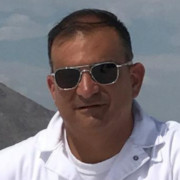
Chris Yakabe
President, InnoVets Aerospace
Chris Yakabe is the President of InnoVets, LLC. Chris has over 16,500 flight hours spanning 40 years of military and civilian flying. Chris has flown over 35 different types of aircraft including everything from small, unpowered gliders and Cessna trainers to the Boeing 747-400. He is a distinguished graduate of the Naval Postgraduate Aviation Safety Officer School, graduate of the Air Force Safety Officer Program, and former Chief of Wildlife Management for the Air Force, which included management of the Bird Strike Hazard program for Air Force operations world-wide. He is a former military instructor pilot and flight examiner. He is currently a FAA certified civilian multi-engine/instrument instructor, and holds a FAA Part 107 sUAS certificate. He is a U.S. Coast Guard Academy Graduate, served as a Calculus II Instructor at the United States Air Force Academy, and holds a Master’s Degree in Flight Operations from Embry-Riddle University (he currently serves on the editorial review board of the university’s aeronautical research journal). Chris is a former NASA contract researcher and a NASA airline operations SME. He has flown all of NASA’s full-motion simulators including their contract centrifuge. He is also a founding member of the NASA/FAA unmanned traffic management (UTM) public/private teaming effort.
Mike Whitted
Chief Executive Officer, InnoVets Aerospace
Mike Whitted is InnoVets, LLC Chief Executive Officer. In addition to managing the operations of InnoVets Grand Sky facility, Mike has over 20 years of experience as a USAF pilot-in-command and instructor/evaluator pilot in multiple categories of military and civilian aircraft. This includes over 3,000 flight hours in aircraft ranging from KC-10 heavy air-tankers to light aerobatic gliders. Mike has an extensive background in aviation management to include a position as the United States Air Force Academy Operations Supervisor and Soaring Control Officer. He is a former Air Force Flight Safety School Graduate, and squadron flight safety officer. He also has a decades-long background managing US Government and DOD aviation services contracts worldwide. Mike is a Graduate of the United States Air Force Academy.
1:00 PM – 1:45 PM EDT
DRONEPORT SPOTLIGHTS
Grand Sky, North Dakota
Created in 2015 and located on the property of Grand Forks Air Force Base near Grand Forks, N.D., Grand Sky is a great example of how government and business can collaborate to help spur the growth of a promising and emerging industry. Grand Sky has developed into one of the leading droneports and UAV testing facilities in the U.S. Seminar attendees will be provided with a complete overview of the drone park by Grand Sky President Tom Swoyer, who will share, among other things, how this “Palace on the Plains” is invigorating and energizing an entire state, region and industry.
USA Drone Port, Kentucky
Located in the mountains of Eastern Kentucky near the city of Hazard, USA Drone Port (also known as the National Unmanned Robotics Research and Development Center) is poised to become one of the major drone testing, research and development facilities in the nation. Currently sporting a 500-foot asphalt runway, with plans to lengthen the runway another 3,000 feet, along with a facility to fabricate, build, test, repair and print robotics and accessories, USA Drone Port is continuing its efforts to gain support from both the public and private sectors to expand its foot print through the construction of additional structures, including an indoor unmanned flight testing facility. Hear from USA Drone Port Director Bart Massey as he shares his vision of crafting a world-class unmanned vehicle research, development, training and education facility.
Oklahoma Air & Space Port
The Oklahoma Air & Space Port has served many functions throughout its nearly 80 years of existence. Originally built as a naval air station in 1942, this venerable facility located in Burns Flat in rural Western Oklahoma has since reinvented itself over the years, including serving as the Strategic Air Command’s 4123rd Strategic Wing in 1959 when it was known then as the Clinton Sherman Air Force Base. Today, the Oklahoma Air & Space Port is a public-use airport and industrial airpark operated by the Oklahoma Space Industry Development Authority, with facilities in place for aerospace testing, research and development, flights and launches. It is one of just 12 spaceports in the U.S. that boasts one of the longest and widest runways in the nation, and has the distinction of being the only spaceport with an FAA-approved spaceflight corridor not in restricted airspace. Learn more about this state asset from Director Craig Smith as he revisits the spaceport’s unique past, but also explores its promising future.
Speakers:
- Bart Massey, Executive Director, USA Drone Port
- Tom Swoyer, President, Grand Sky Development Co.
- Craig Smith, Executive Director, Oklahoma Space Industry Development Authority, Oklahoma Air & Space Port
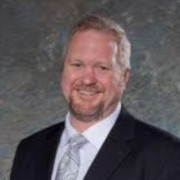
Bart Massey
Executive Director, USA Drone Port
Bart Massey, a Kentucky native, the Executive Director of the USA Drone Port and Program Coordinator of the Unmanned Systems Technology Program at Hazard Community and Technical College. Bart is an entrepreneur and innovator that has spoken and presented at locations and venues including the Paris Air Show, the Pentagon, the European Drone Port, AUVSI, and a variety of other locations around the world. He helped design and build a heavy payload drone for the National Institute of Science and Technology (NIST) in 2018. Bart has authored and published multiple books including one of the first on search and rescue with drones. Bart works with, consults and partners with multiple federal agencies and departments and has met, on this topic, with many officials including the United States Senate Majority Leader. He is a member of two contracting corporations offering training and consultation about unmanned systems and intelligence and participated in the 2020 Defense Strategies Summit. He is optimistic and vigorous in his pursuit of unmanned industry growth and security in the United States and continuing growth of unmanned systems in his region. Bart leads the annual USA Drone Conference that is hosted by the USA Drone Port in April each year, bringing professionals from around the world to the beautiful mountains of Kentucky.
Tom Swoyer
President, Grand Sky Development Co
Tom Swoyer is the President and a Partner of Grand Sky Development Company. Since 2015, Tom has led the development of Grand Sky, the nation’s first commercial UAS droneport. From fund-raising and operations to marketing and tenanting, Tom has engaged in every aspect of growing Grand Sky from concept to operating the droneport, generating over $19 million per year in economic impact. As Grand Sky enters a new phase of development, Tom is working to create the infrastructure needed to support command and control networks supporting Beyond Visual Line of Sight Flight. Additionally, Tom is working to develop the infrastructure needed to support data management from commercial large UAS flights to assist in energy, agriculture and emergency management.

Craig Smith
Executive Director, Oklahoma Space Industry Development Authority, Oklahoma Air and Space Port
Craig J. Smith is the Executive Director of the Oklahoma Space Industry Development Authority and the Oklahoma Air & Space Port. This is a public-use airport and industrial airpark that has facilities in place for aerospace testing, research and development, space flights and launches. As one of twelve spaceports in the nation, it is the first with an FAA-approved 152-mile long and 50-mile wide spaceflight corridor that extends into space and does not interfere with restricted airspace or Military Operation Areas (MOAs). This facility is home to one of North America’s largest runways (13,503-foot by 300-foot concrete runway) available for both civilian and military use. With more than 1,000 acres of land available for development this facility has a wide variety of potential building sites available, including over 100,000 square feet of available hangar space (six commercial aircraft hangars) located near our ramps, taxiways and runways.
Smith previously was a communications specialist for Leidos working for the FAA Mike Monroney Aeronautical Center in Oklahoma City. Prior to that he served on the staff of a previous Governor, Members of Congress, and a U.S. Senator. An experienced leader with a demonstrated history of accomplishments working in both state and federal government roles, Smith has worked in public affairs, political communication, grassroots organization, economic development, government and legislative relations capacities.
Smith grew up in Oklahoma and holds a Master’s in Communications from Northeastern State and a Bachelor’s degree from Oklahoma State University. He and his wife of 27 years reside in Yukon and have two adult children.
2:00 PM – 3:00 PM EDT
Using Droneports Today to Develop New Technology and Safety Systems for integration of Unmanned Aircraft Systems into the US National Airspace
This session will provide an overview and timely update on the use of a droneport in central Oklahoma, the Oklahoma State University Unmanned Aircraft Flight Station, to perform critical systems and flight testing of novel safety systems making an impact on the UAS industry and helping to pioneer the frontier of beyond visual line-of-sight flight for unmanned aircraft systems (UAS). Discussion will focus on recent development, commercialization work and flight testing of the FlightHorizon detect-and-avoid and airspace management system at the OSU droneport.
Utilizing a research and commercialization grant from the Oklahoma Center for the Advancement of Science and Technology (OCAST), the project has resulted in numerous flight tests and extensive product development to integrate portable air traffic surveillance radars into the FlightHorizon detect-and-avoid system. Based on two licensed NASA patents, the FlightHorizon system helps unmanned aircraft pilots to maintain safe distances from other air traffic, which is critical to allowing drones to fly beyond visual line-of-sight of the pilot. The system is currently used in NASA and FAA flight testing programs and has been the subject of multiple scientific papers.
The discussion will include a range of topics and practical experiences in the use of droneports in the development of new technology:
- Discussion of OSU’s droneport, how it is situated and operated and serves not only the University but also the larger UAS industry in Oklahoma and nationwide
- Goals of the current FlightHorizon research project and what activities have been completed and results achieved to date at the OSU droneport
- Review of a recent American Institute of Aeronautics and Astronautics (AIAA) paper on the project, co-authored by OSU and Vigilant Aerospace
- Approaches and funding paths for the development of R&D programs at droneport and airpark facilities
- Potential development of an unmanned flight testing and drone delivery corridor in central Oklahoma
- Opportunities for the development of a regional unmanned traffic management (UTM) system, supported by Vigilant Aerospace, by OSU’s USRI and other sponsors and users
- NASA’s recent awarding to OSU and a team including Vigilant Aerospace of a new project to study wind hazards and how they impact unmanned aircraft, particularly to support Urban Air Mobility operations
Participants in this panel will include Kraettli L. Epperson, CEO and co-founder of Vigilant Aerospace which provides the FlightHorizon system, and Dr. Jamey Jacob, director of Oklahoma State University’s Unmanned Systems Research Institute. Mr. Epperson is a frequent speaker on unmanned aircraft detect-and-avoid systems and is the co-author, with NASA Senior Research Engineer Ricardo Arteaga, of multiple industry research papers on autonomous systems. He is an FAA certified Part 107 UAS pilot. Dr. Jacob is a national leader in UAS research, an OSU professor of mechanical and aerospace engineering and has worked on projects ranging from solar aircraft to UAS to be flown on Mars.
Speakers:
- Kraettli Epperson, CEO, Vigilant Aerospace Systems, Inc.
- Jamey Jacob, Director, Unmanned Systems Research Institute, Oklahoma State University
Kraettli Epperson
CEO, Vigilant Aerospace Systems, Inc.
Kraettli L. Epperson is the CEO and Co-Founder of Vigilant Aerospace Systems, which provides airspace management and autonomous collision avoidance software for unmanned aircraft based on a patent exclusively licensed from NASA. Mr. Epperson has a 20-year career as a serial entrepreneur and investor in technology startups in both the US and Europe. He is a frequent expert speaker at major UAS industry conferences such as InterDrone, Xponential, the UAS Summit & Expo, and more addressing topics such as unmanned aircraft detect-and-avoid, and UAS flight safety and airspace management systems for commercial operators, fleet managers, and unmanned airfields. Mr. Epperson is the co-author, with NASA Senior Research Engineer Ricardo Arteaga, of multiple industry research papers on autonomous systems and is an FAA certified Part 107 UAS pilot.
Jamey Jacob
Director, Unmanned Systems Research Institute, Oklahoma State University
Jamey D. Jacob is the John Hendrix Chair and Professor in the School Mechanical & Aerospace Engineering and Director of the Unmanned Systems Research Institute at Oklahoma State University. He is the author of over 100 papers and technical reports in the areas of unmanned systems, aerodynamics, flow control, and inflatable structures. He received his B.S. in Aerospace Engineering from the University of Oklahoma in 1990 and his M.S and Ph.D. in Mechanical Engineering from the University of California at Berkeley in 1992 and 1995, respectively. He was a National Research Council Summer Faculty Fellow in the Air Force Research Laboratory at WPAFB in both 2003 and 2004. He spent 10 years as a professor at the University of Kentucky in the Mechanical Engineering Dept. He currently serves on the Governor’s Aerospace and Autonomous Systems Council and as president of the Unmanned Systems Alliance of Oklahoma.
Presented by the DronePort Network in collaboration with Unmanned Aerial Systems Cluster Initiative
The
DronePort Network brings together communities and thought leaders interested in unlocking the potential to prosper and create jobs in the emerging UAS industry.
The
Unmanned Aerial Systems Cluster Initiative (UASCI), is funded through a contract with the U.S. Small Business Administration to accelerate the growth of the Unmanned Aerial System industry in the U.S. by enabling established companies and emerging entrepreneurs to connect, work together, and gain access to national technology, global capital, advanced business models and global markets.